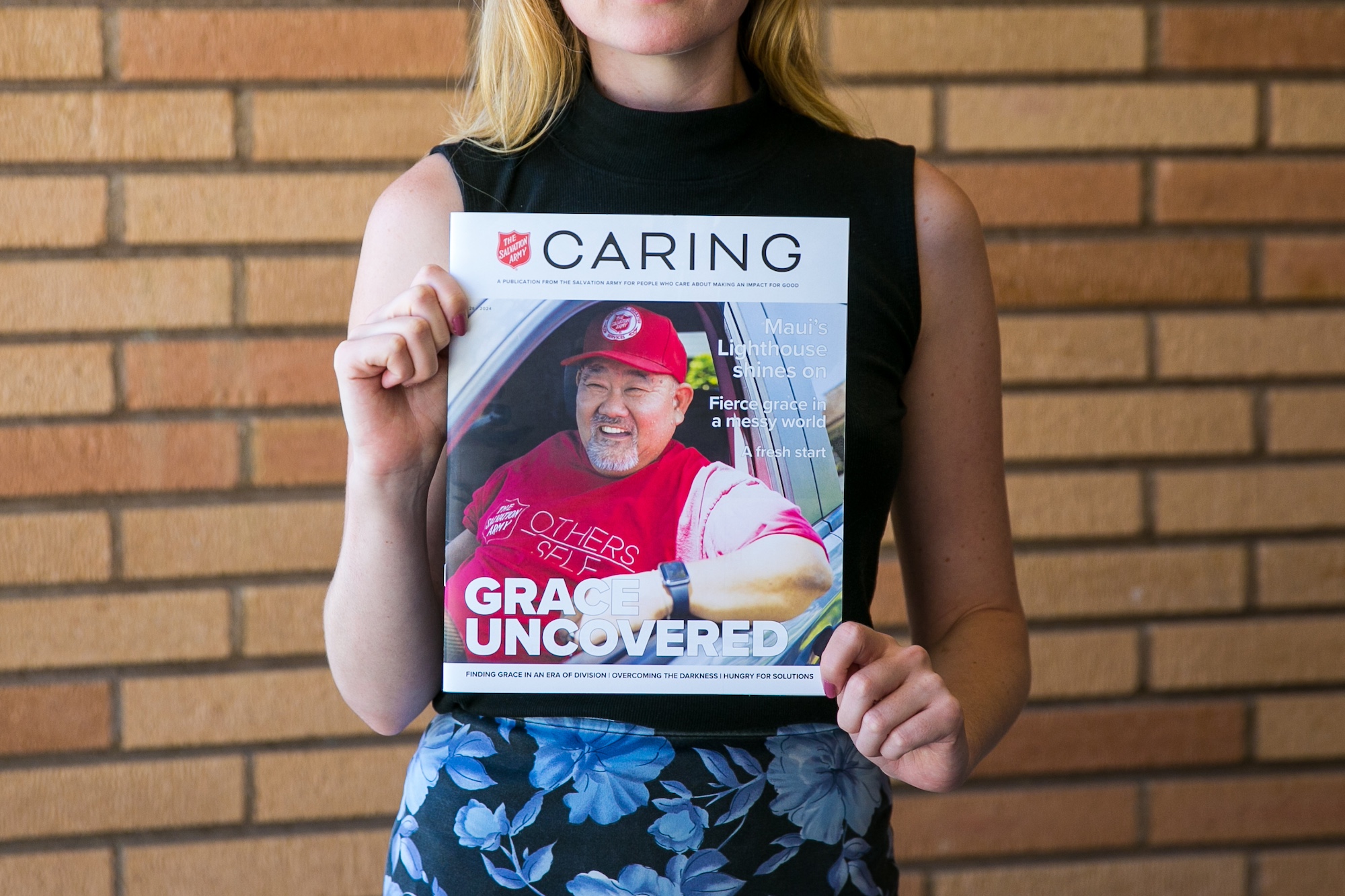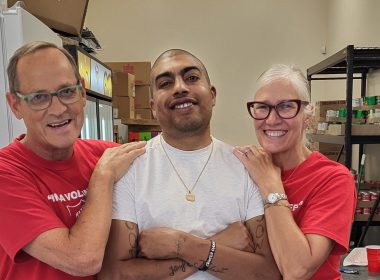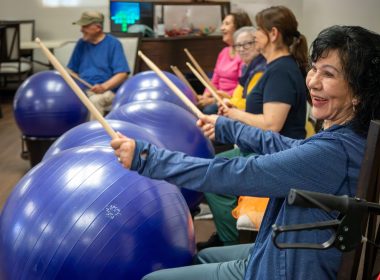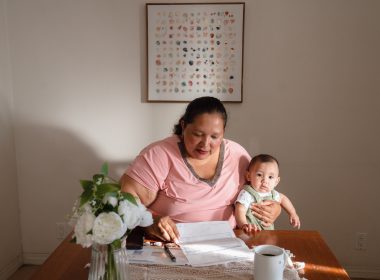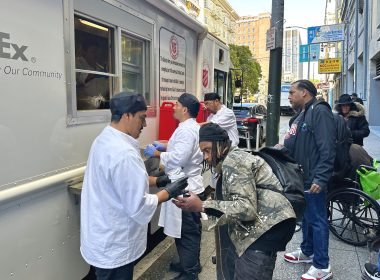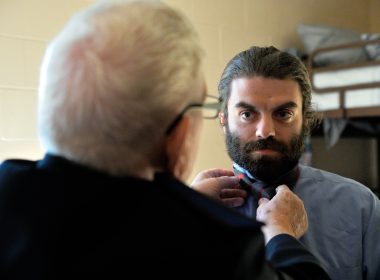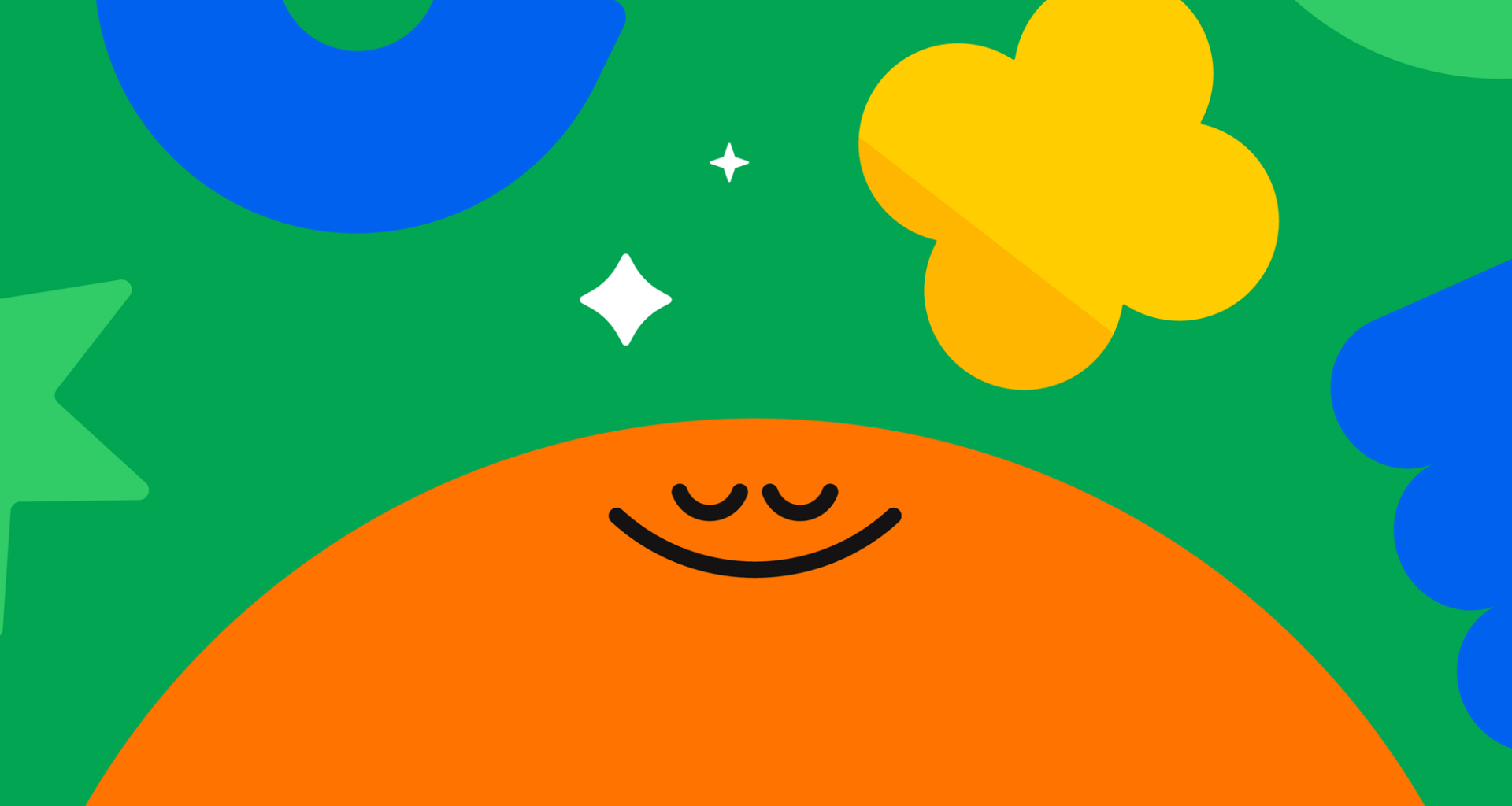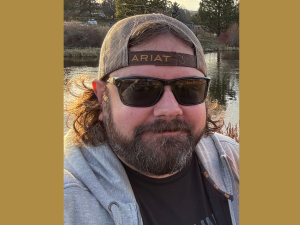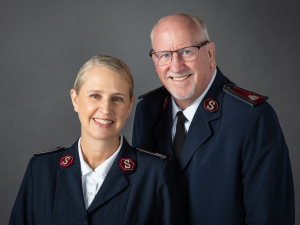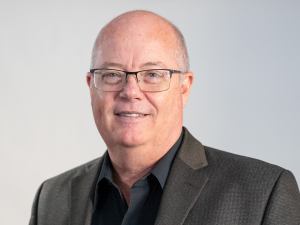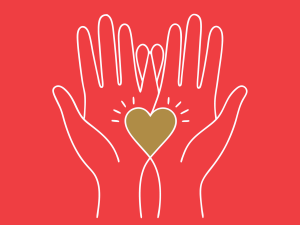We’ve been exploring the profound impact of disaster—from the immediate shock of evacuation to thinking about a changing ministry in the face of large-scale disaster to the importance of personal preparation.
Through it all, one theme keeps emerging: We need to care for our mental and emotional well-being.
Today, we’re looking at one of the most powerful tools available to us—our own mindfulness.
Dr. Jon Kole is the Medical Director and Senior Director of Psychiatry at Headspace, which calls itself “the mental health app for every moment.” From guided meditations to one-on-one coaching, the Headspace team of clinical experts and trained coaches work to offer science-backed care.
Dr. Kole is joining us today to explore how mindfulness and meditation can help us navigate life’s challenges, whether we’re dealing with disaster recovery or everyday stress.
New research shows even small amounts of mindfulness practice can significantly reduce stress, anxiety and depression. Dr. Kole will help us understand the science behind these findings and share practical ways to build resilience through mindfulness.
Whether you’re processing the trauma of a disaster, supporting others through crisis, feeling very much out in the cold, so to speak, or simply looking for ways to better handle life’s daily pressures, this conversation offers hope and practical tools to help you love your nervous system.
Show highlights include:
- More about Headspace and what it offers.
- What drew Dr. Jon Kole to the intersection of traditional mental healthcare and mindfulness practices.
- How mindfulness helps during times of heightened stress and uncertainty, like in the aftermath of disasters.
- What happens to our nervous system during prolonged stress, and how mindfulness can help regulate our response.
- Research showing significant improvements in stress, anxiety and depression levels for employees using Headspace. Why consistency is important for seeing benefits.
- How to get started with this behavior.
- What he would say to someone who thinks meditation “isn’t for them” or they “can’t quiet their mind.”
- How mindfulness practices can help rebuild community resilience after disasters.
- How families can use these tools with their kids.
- What excites him about the future of mental health support combining traditional care with mindfulness tools?
- What Dr. Kole would share with a listener who is currently struggling.
Listen and subscribe to the Do Gooders Podcast now. Below is a transcript of the episode, edited for readability. For more information on the people and ideas in the episode, see the links at the bottom of this post.
* * *
Dr. Jon Kole: I am a Medical Director at Headspace. I’m an adult and child psychiatrist and licensed across the country. So I see patients in 50 states.
Christin Thieme: Can you give us just a starting point here—for anybody listening who might not be familiar with Headspace—what exactly is that tool?
Dr. Jon Kole: Absolutely. So we offer a virtual mental health care system, which many millions around the world know, predominantly for our mindfulness content—videos, audio recordings, sleepcasts, ways to be kind to your mind. And we also, however, offer 24-7 access to text-based and video coaching and video visits in psychotherapy, as well as visits with psychiatrists like myself.
Christin Thieme: Be kind to your mind. I like that phrase. Can you talk a little bit more about what do you mean by that and why is that something worth doing?
Dr. Jon Kole: As long as we’re breathing on this planet, we have to be present with our feelings, thoughts and attitudes and be curious about them instead of being judgmental, exploring ways that we can notice our strengths and our capacities can support us even in some of the darkest moments. And not unlike the difficulties with natural disasters that are being experienced in Los Angeles right now.
Christin Thieme: Yeah, absolutely. What drew you to this sort of intersection where you’re a doctor, a psychiatrist and working in this mindfulness sort of space? What drew you to that intersection?
Dr. Jon Kole: Well, that’s a big question with a lot. I’m fortunate to have lots of answers. There’s a couple of core ones for me, personally. Within medical school and practicing in various settings, including federally qualified health centers and with people of various different ages, it became clear we have some really quality evidence-based offerings in mindfulness techniques and the power of exercise, the power of psychotherapy and various medications for certain conditions, but it wasn’t always getting to the people that would benefit most from it. So at one point, I worked at five different clinics trying to improve access. I biked between one after another, but I still had trouble with people getting to their visits because it’s hard when you have to take a bus or have childcare. And so I got really excited for opportunities for people to get support and service in ways that are accessible.
And it happens to be the case that about, I think the last check, was like 89 percent of American adults have access to a smartphone. And that’s even the case, 83-84 percent of those with Medicaid. So across populations, people have phones and we might be able to reach them through that modality. And so I was really thrilled at the opportunity to be part of a care ecosystem that met people where they were.
I see lots of people as patients with video visits in 30 minutes, breaks of their lunch in their car and it’s so much easier to get care than any other time in their life. And then the idea of me assigning someone to do meditation that I can track in the app as a provider and know that they’re doing it and then praise them later for their progress, that can just help so many.
And there’s lots of evidence that not everyone needs to see a therapist or psychiatrist. What they need is tools and they need support in the moment of need. And so I’m thrilled that our platform really has a unique combination of asynchronous and human-supported care that allows for those real big wins.
Christin Thieme: I saw there was a recent UCSF study that showed significant improvements in, think it was specifically for employees using Headspace, if I remember correctly, in their stress and anxiety and depression. Can you talk a little bit about that and what the findings were there?
Dr. Jon Kole: Oh gosh, we have such a fantastic research team. Huge credit to all of them. We have over 60 published peer-reviewed studies and on all different ways that just basically handing and giving someone access to the headspace mindfulness can impact a number of their factors, reduce symptoms of anxiety, depression, reduce immunologic markers. So our body’s immune system was a lot less revved up with you the more time spent using this tool. People’s cardiovascular health improved using this. Many different things.
And one of my favorites is also, you know, when we did a study with the University of Michigan where we simply were giving Headspace to those on a waiting list for mental health care and really hoping to get scheduled. And their scores of anxiety, depression and suicidality all decreased when having access to Headspace. That didn’t require that one-on-one visit. And people who were, you know, so distraught that they were seeking out care were able to get improvement. So for those that are just looking to reduce their sense of stress to those that are actively seeking higher levels of mental health care, there’s just a lot of evidence-based benefit from our tool.
Christin Thieme: What would you say is the kind of ideal setup for somebody on an average day who wants to bring mindfulness more into their life?
Dr. Jon Kole: That’s a lovely question. I think I would start with being reflective for a moment of like, what is a commitment that they think they could make that has a high chance of success, right? So aiming way too high and then feeling that you can’t do 50 minutes a day of meditation, will just sort of can lead to discouragement and disengagement.
But if there was a more manageable goal: I’m going to try and do this for five minutes a day. Some meaningful benefit that five to 10 minutes is much better than none. I’d say picking a real small target goal. I’m going to do this for this many minutes a day and being specific about it. I’m going to do it at a specific time or, and, and just sort of like say, you know, this is the one, this is the change I’d like to make. Then praise yourself along the way as you’re building it. We try to build our interface to do so and praise you for streaks and things like that.
So if they were looking to build a meditative practice, it would be to say to begin small, small, small, and then maybe begin with the end in mind to think, what am I looking to get out of this? Maybe it’s I want to be more aware of my negative thoughts about myself. I want to be a little bit less grumpy with my kids or partner. I’m hoping to make this part of my routine to feel a little bit more resilient to stress at work.
So then also as you commit to that, you can also check in on the other domain because that motivating force is what brought you to try and build a new habit in the first place.
And the last aspect is if there is something that gets in the way too often when we have trouble starting a new goal with meditation or mindfulness as well, when it doesn’t go well, we blame it on a lack of fuel. And when I mean by that is like we internally look to ourselves and like, I wasn’t motivated enough. Or we sort of like absorb the discontent when actually much more evidence suggests it’s hard to make a behavior change. It’s actually not a fuel or internal problem a friction, it’s an external problem actually. You know my kid has been really sick and it’s been hard for me, like that’s been all my time has gone to that or I’ve been really stressed about this other thing or my phone broke and that was where I was going to do meditation.
It’s something that got in the way and so if we have trouble building a new habit to not just layer shame or guilt onto that. Iinstead of being judgmental, being curious, hmm, what is the friction? What is the thing that’s in the most of the way? You know, I’ve tried this five minute habit in the morning, but I want to sleep in and everyone tends to be in bed at my house at night thinking maybe I should do it then.
What a different frame when we are struggling to make a change to instead of just absorbing and taking on the worst component, just being curious and likely more accurate about what’s the big barriers and being open to what things can be changed if possible.
Christin Thieme: Yeah, definitely. So it’s something that is helpful anytime. But I know, you know, we’ve been talking a lot about on this show, the response to the LA wildfires. What does this sort of mindfulness, just kind of being aware of our nervous system, what does that do, especially in times of heightened stress?
Dr. Jon Kole: Yeah, no, I think it’s a lovely question. You know, our body has one alarm system. It’s the same one designed for running from fires or fighting tigers. And it’s our sympathetic nervous system. And so what can be really challenging is when we’re doing one activity that we may not associate with throughout, maybe we’re at work, maybe we’re talking to a partner, but we’re still revved up from this threat that we read in the news or the sort of this worry we had right before. And so maybe we feel sweaty palms or heart racing or just feeling agitated.
And so, you know, when I think about what approaches that we want to help support those that are going through hard times, whether it be as the natural disasters or other moments where they’re feeling their body ripped up is the same framework I try to teach in my first graders class, which is this concept of notice, name, tame—and meditation and mindfulness can really help us in this.
So what do I mean by notice, name, tame?
So when you have this feeling in your body, one of the things that meditation helps us get better at, but is an important thing to try to focus on, is just to notice. Wow, I was a little bit shorter with this person than I normally am. What’s happening? I’m a little tense in my shoulders. If we notice these, and mindfulness is the practice of being mindful and noticing, right? Then we can start to move on to the next component, which is naming.
I think I’m angry. I think I’m irritated. I think I’m feeling sad. When we name something, it actually becomes less scary and situate like, no, I’m just really frustrated about this situation. Actually, I’m feeling this emotion. I’m feeling scared. We’ve been scared before. We’ve had coaching from some people in our lives before about when it has a name, it’s more approachable. Mr. Rogers used to say, what’s mentionable is manageable.
So if we can name it, then it’s not this pent-up racy feeling in our chest or this like this sense of dread. It’s I’m scared. I’m worried. I’m really angry, whatever the feeling might be. So noticing the physical sensations, naming them and then tame. So what does tame mean?
Tame doesn’t mean extinguish. That’s not a thing that feelings do. They would just like mute them and put them in a Tupperware. But if we say, oh, I’m feeling angry. I’m feeling angry because I had big hopes and now my people that I care about are under threat and my plans are going to change or I’m not sure where I’m going to sleep tonight with the fires or whatever it may be. Then if we name it, we can focus on, I’m going to just focus on taking a walk or listening to music, hugging the one that I care about or doing just 10 minutes of the exercise I choose just dissipate a little energy.
Taking the frame of taming is not to say that it’s going to make it go to a zero, but it’s going to make it more manageable.
And so this is a framework that we can take across our emotional palette, right? So we notice it, we name it. If it’s an unpleasant one and it’s causing stress, what can we do in the right now to make it a little bit better? And that’s another area of the meditation. So sometimes people can find, they can find more calm if they start to focus on their breath or they do listening to our calming track that’s been helpful to them before or ground themselves on a phrase that they’ve been really helpful. So both specifically on the noticing and the taming and even the naming because we get used to like, that feels like the last time I noticed I was angry. All of them improve with mindfulness and meditative practices.
And certainly it’s not limited to that, right? So talking to a care family member or partner or a friend that can help us to notice a name a little bit better. Or doing our preferred activity like deep focus on Legos or whatever it might be, right? Might help us tame the feeling. So it’s really not restricted to mindfulness and meditation being helpful in those ways. But this framework, notice, name, tame, can really be a nice strategy for any emotion.
Christin Thieme: And it’s easy to remember, which is helpful. Yes. One thing I noticed, so many of the examples that you gave, which this is something I’m sure you hear a lot, none of them were sitting in a quiet room with their legs crossed on the ground and sitting in silence. What do you say to people who say, oh I could never just sit in silence for 10 minutes or however long?
Dr. Jon Kole: I honestly, say what my kid was taught in her school—connection. So for me, you know, I’m always a little embarrassed as someone who’s a medical director of this lovely ecosystem that I don’t really love that type of meditative practice, but I really enjoy other forms of trying to be purposeful and mindful and doing those through either meditative walks or doing those sort of like to having very purposeful in the moment time with each one of my three children and thinking about like, I’m going to really focus on being in the here and now.
And so really my answer to that would be like, there are lots of ways to build up this noticing that does not require full sensory deprivation sitting in a corner at the perfect folding and almost seeming as though you’re going to levitate in the next moment. There are lots of ways to get better about noticing your thoughts, noticing your feelings and not being judgmental towards them, but simply being curious and aware that the process of your thoughts are not in our control.
We are not our thoughts. And so if we can have a little bit of distance from them then and sort of be curious about them, then they get a lot less powerful in dominating our life. And so short answer is I’m right along with you with the person who doesn’t find that that’s the optimal way for them to find their being in the present now. And so there we would invite them to either check out our app or any other place where they can learn about ways to be in the present and now.
Christin Thieme: Why is consistency so important with these practices for actually seeing benefits?
Dr. Jon Kole: That’s a great question. And I think the probable answer is actually meditation is not special. It’s a behavior. And so most of the time that’s how life works, that most of the most meaningful changes in our life are a product of small decisions and practice. Right?
The next time you see LeBron James do a sweet move and find a way to make a shot that looks incalculable, right? Then we don’t get to see that that shot has been tried in a variety of different ways, shapes and forms over hours upon hours upon years of attempts. Right? And so the things that we get really good at and that are the product of lots of small decisions. And so that comes with our nutrition that comes with our, you know, it comes with our, cardiovascular health. That comes with our most meaningful relationships, right? Like do we send the, when we’re like a little irritated and do we still try to make the connect back and use the kind phrase or do we, you know, maybe disconnect? And so things, when we do something repeatedly, it gets easier. When we do something repeatedly, we get better at it.
And at the same time, there’s like every skill, there’s a variation person to person at natural ability. So some people might come and sit and be like, I can do all the meditation and I feel like I’m good at meditation, which isn’t a thing, right? Just doing it is being good at it. But are there are those who find that really challenging, right? So instead of not like, in a comparative fashion, but like, how can I myself be a little bit better at this tomorrow and likely it’s around daily decisions to make small practices and changes.
Christin Thieme: Is that what you’ve seen be the most effective in building this sort of sustainable practice, if you want to call it that, just making those daily decisions? Or have you seen anything else that you would point to?
Dr. Jon Kole: Great question. I would say it’s a combination of motivations that are both fun in the present and value-consistent in the long term. So nobody wants to do something that they don’t find any way pleasurable. You can, you know, grind through it for a little bit, but if it’s, if there’s not some way to sustain motivation, it’s going to fade out. And we know that about all sorts of behaviors. Right?
So how do we make it fun? Maybe we pair it to an activity, right? If I do this meditation, if I do this physical exercise, if I make this reach out to a friend that’s a little bit hard for me to do, then afterward I’m going to get to watch five minutes of my favorite show, or I’m going to only walk on the treadmill when I’m binge watching this show. That gets people to do things more. We pair it to something pleasurable, right? So what can we do to make something feel positive in the current moment?
And then how can we keep reminding ourselves of the value we’re working on? So I mentioned earlier, like, why am I adding this practice if I want to meditate? I had this larger goal that was value consistent to me to be a better partner, friend, to be more patient, whatever it might be. And so then when you’re like, I really don’t want to do this today. I really wanted to do XYZ other thing. That can help us be a source of motivation. This sort of compass goal of a value for ourself in the future.
So I think we want to, it goes back to that fuel friction. Ooh, I’m having a hard time doing it. I’m not, I like to lower the friction. So I’m going to put my, I’m going to put my, I’m going to set a little alarm on my phone. I’m going to tell my loved ones. I’m going to put my phone on not disturb. I’m going to make this little spot where I’m going to try to do meditation if that’s what I was looking for.
I’m going to make the friction really easy for me to just slide into trying this new behavior. And when I do it, I’m going to keep a tally. I’m going to do a dance song every time I do it. What am I going to do to make myself feel good about the success? And then I’m going to keep my guiding force, the value behind the change, top of mind. So maybe once every week I’ll check in, like, how am I doing on this patience? You know, I didn’t flip out in traffic yesterday. This was pretty great.
Christin Thieme: That would be impressive.
Dr. Jon Kole: Right? Yeah. Keeping the long-term goal, but also just noticing that we as humans need little wins. And so whether it be pairing it to something that we know is going to feel rewarding, or just bringing attention to it and praising ourselves with some self-compassion.
Christin Thieme: We’ve been talking a lot about this on an individual level. Do you think that mindfulness practices have any role, or what role would you say they have in helping to even rebuild sort of a community resilience after a large-scale disaster?
Dr. Jon Kole: What a lovely question. You know, I think we do, right? Because when we think about a lot of the distress that can happen after this amount of loss, right? There is a grief around things that were there in the past that were not moving forward. There’s an anxiety about our future with the changed landscape and loss of resources and home and connect and like, what does it mean for it to live back in this area?
So there’s a lot of sadness in the past and worry in the future. And so at the same time, what’s going to be most important to this region in the future is the behaviors in the now, right? Are people supporting each other in the ways that they can? Are they, you know, uplifting and bringing attention to the amazing first responders supporting the area? Are they making their votes heard for people who are interested in rebuilding and re-supporting? Are they helping their neighbor in any way they can? Those are decisions in the now.
So, you know, mindfulness of say noticing those thoughts, the worry of the future, noticing a sense of grief in the past. Acknowledging them, naming them, taming them, and then bringing our attention to the now. What is the thing that I can do that’s consistent with my values? And often that is helping those around us that have been experiencing such hurt and harm.
Any recovery and rebuilding in this region is going to be happening based on brave and courageous and kind and caring actions in the right now. So we need people to be present in the moment more than ever.
Christin Thieme: What about as a parent? How can you help to instill mindfulness practices with your family, your children?
Dr. Jon Kole: I would say that there are lots of fun ways to involve them. This is, you’ve sort of hit on a topic that could go on quite a bit on as someone who is a parent, a pediatrician, a child psychiatrist in my training, lots of passion areas here.
Firstly, we talked about notice, name, tame, right? You can name that feelings are mentionable, acceptable and that they’re inherently valid. It’s okay to have a feeling.
We can do something called special time for specifically our younger children as well, which is just to say every day I’m making the commitment to try for five minutes to be fully present with them, phone away, and they’re the driver of the activity. Right? So if they want you to build the same Lego that you’ve done several times, do it. If they want you to do it, whatever, they’re the driver.
Because in a world where they might feel out of control when things are happening, knowing that every day there’s going to be a dose where they’re the boss. That’s safe. Of course, they can’t make you jump off a building, but you know, that’s a really empowering reminder of the now can be really sweet and meaningful and builds that connection.
And then we, of course, in the app really are very excited about this. So there’s a lot of abilities for you to have, you know, as young as three and beyond, there’s sleepcasts, we have the ability to do one minute meditations up to five. And so my 11 year old has certainly tried those. And even my almost three year old sometimes likes to hear a certain person when she’s feeling frustrated.
Christin Thieme: I think I remember seeing Elmo in there too.
Dr. Jon Kole: Yeah, yeah. And then for the parents, we have an entire series about mindful parenting, about ways that you can build these skills and practice them yourself to support others.
But if I was going to say just the primary take home is that feelings and thoughts are mentionable, manageable and they are, you know, once they are mentionable, then if we could talk about them, they’re less scary and less intense and people can feel more confident in that domain as well.
Christin Thieme: What excites you about the future of mental health support, especially when you consider tools like Headspace that help people with this mindfulness?
Dr. Jon Kole: Yeah, think what some of the things that excite me is when we can take some best practices and make them more engaging and accessible to many. So I have another psychiatrist on our team, Dr. Ngarubakshi. She did several recordings about some of the ways to approach big feelings of anxiety and sadness.
And we made what’s called a guided program, so basically a three-week series where you could do a little lesson every day. And often, people that interact with our app, our members, and they’ll say, wow, Dr. Ngarubakshi was so helpful. She never met them. And so the ability to uplift voices that have such value and to just to make them a click away really helps improve access.
You know, there’s something we often as caregivers say again and again, that we wish we could put it in the water. Well, these are ways to put it in the water.
And then just the responsiveness of the tools that allows to someone to get support in the moment they need, right? Too often, the way our mental health care system is designed is provider not patient first, right? In that you have to schedule an appointment and then you like maybe wait two or three days to talk about a thing that’s on your mind now. It makes sense how it came to be that, but what if you could get, you know, had a difficult interaction with your ex and you’re frustrated in the moment and you could share that with somebody right now and they could say, that makes total sense. That’s so frustrating. And you just feel your sympathetic nervousness start to calm down.
Your feelings are valid, they’re mentionable, they’re manageable, you were noticed, it was named, and then you work on taming, right? And then maybe you didn’t need as many therapeutics, maybe you didn’t need as much care because what you really needed was just some support in the moment. And sometimes you don’t have that in the community of people with you right there. So if we have ways to make access easier and more seamless, and to disseminate evidence-based practices with lower barriers and lower costs. Yeah, I get excited about it.
Christin Thieme: Yeah, definitely. Lastly, what message of hope would you share with a listener who is struggling with something right now?
Dr. Jon Kole: What a lovely… I would say you matter. You are not your worst thought. You are not the worst moment.
And, you know what? The human superpower is the ability to find new balance.
When we go into a cold pool, it feels terrible initially. But if we sit there, often it feels different at minute five, 10, 15. And the pool didn’t change. We did. Right? We were the ones who adjusted.
And so what feels unbearable now, what feels as though there can’t be a way forward, if we do focus on what we can do right now, do take that one next step in line with our values and our body will help us and get a little more used to the stress and find itself ways to support.
And, obviously, the last aspect, if they’re really struggling and they’re feeling that these changes are hard, they matter enough to seek care. We would be, speaking from anyone in the care-providing field, we would be honored for the opportunity to try to help.
Additional resources:
- If you are one of the hopefuls, get on the list for the Do Good Digest, our free 3-minute weekly email newsletter used by more than 20,000 hopefuls like you for a quick pick-me-up in a busy day.
- If you are enjoying this show and want to support it, leave a rating and review wherever you listen to help new listeners hit play for the first time with more confidence.
- If you want to help The Salvation Army serve more than 24 million Americans in need each year, give today. Your gift of money, goods or time helps The Salvation Army do good all year in your community.
Listen and subscribe to the Do Gooders Podcast now.
